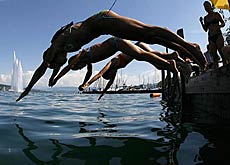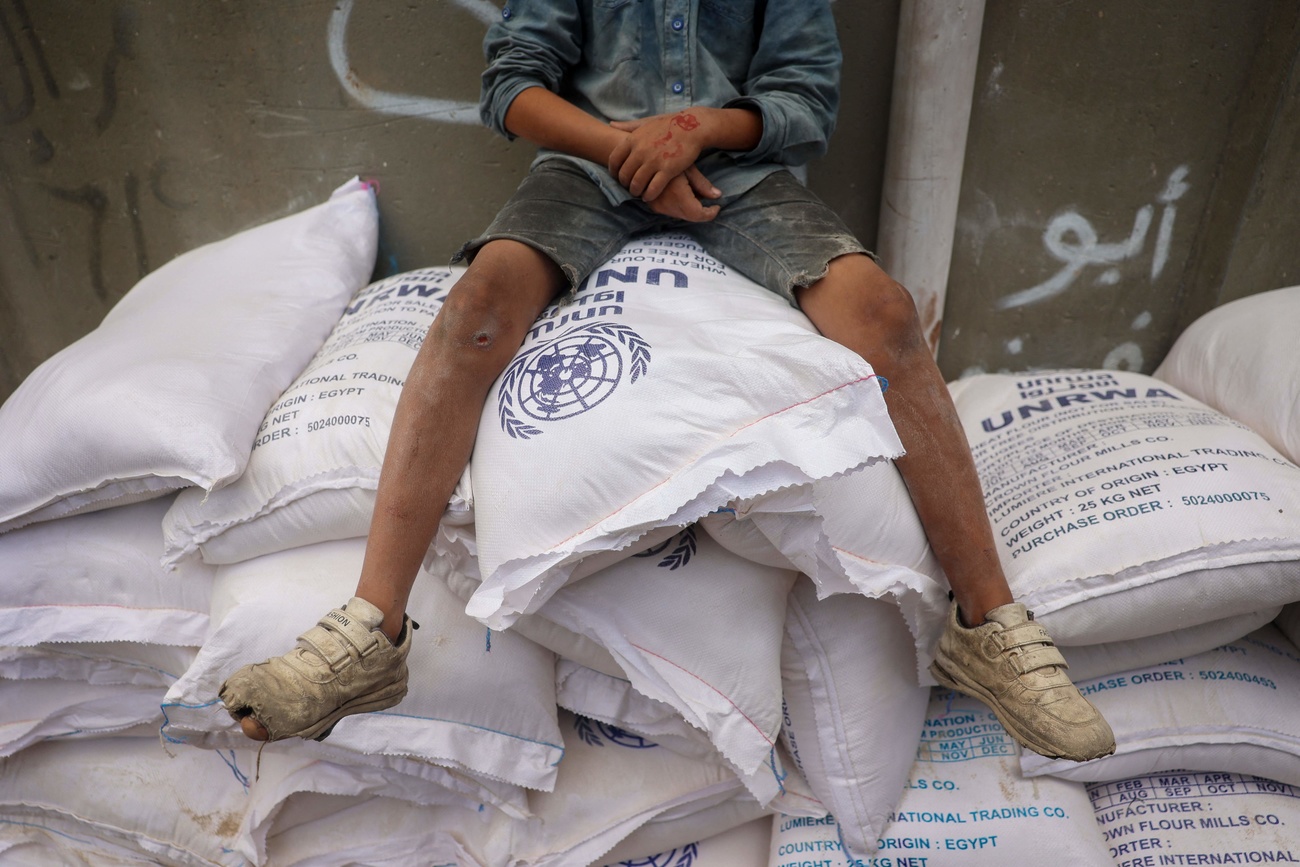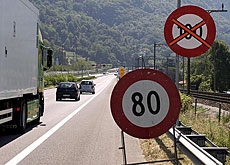Switzerland swelters under heatwave

Meteorologists say Wednesday was the hottest day of the year with temperatures climbing above 34 degrees Celsius and with dangerous ozone levels also rising.
Since the beginning of June ozone concentrations have regularly exceeded legal limits.
Switzerland, like the rest of Europe, has recently been enjoying tropical weather. The first half of 2006 has been exceptionally warm, with temperatures up four degrees on average.
Even so, the Swiss meteorological office says that this year’s summer heatwave is unlikely to beat that of 2003, when thermometers hovered around 30C for several months.
However, for the past six weeks ozone levels in parts of Switzerland have regularly surpassed the legal limit of 120 micrograms per cubic metre (µg/m³).
On Wednesday afternoon 13 of the 16 stations that belong to the National Air Pollution Monitoring Network recorded measurements above the 120 µg/m³ limit.
Exceptional highs were recorded in Lugano (214 µg/m³) and Basel-Binningen (202 µg/m³).
Ticino is one of the few cantons to have issued health warnings as a result of the recent hot weather.
Measures
For now the introduction of nationwide emergency measures to curb ozone levels is not foreseen.
The cantons are on the frontline when it comes to dealing with the reduction of ozone. But only a few want to introduce emergency measures such as speed limits. They are banking instead on the success of public information campaigns.
Since last year cantonal environment directors have started to issue public warnings whenever the ozone level hits 180 µg/m³; there have been four warnings so far this year.
The public is advised to avoid excessive physical exertion and if possible to use public transport instead of their own cars.
But special measures are planned when the ozone levels double the legal limit for three hours. In such a case the cantons of Ticino, Geneva and Graubünden intend to impose emergency speed limits.
According to Peter Strähl, a scientific officer with the Federal Environment Office, the current situation is “not unusual” and 2006 ozone figures resemble those of last year.
Strähl is reserved about proposing special measures to reduce ozone levels. “Short-term measures such as speed limits come too late,” he said.
He highlighted the success of longer-term air pollution measures over the past ten to 15 years, such as vehicle exhaust regulations, incentives for people to use public transport and carbon dioxide taxation, which have brought down ozone levels by ten to 15 per cent.
swissinfo with agencies
Summer smog consists of pollutants, mainly ozone, which collect especially during summer months. It is formed when heat from the sun causes ozone to build up at low altitude by combining nitrogen oxides – dust particles – and volatile organic compounds.
At this point, ozone, which is protective in the stratosphere, can be damaging to humans and the environment.
In Switzerland, the ambient air quality standards stipulated in the Ordinance on Air Pollution Control (LRV) are frequently exceeded in the summer months.
The primary sources of nitrogen oxides and volatile organic compounds are road transport and also industry.
Ozone values recorded at 2pm Wednesday July 19, 2006:
Lugano: 214 micrograms per cubic metre (µg/m³)
Basel-Binningen: 202 µg/m³
Magadino-Cadenazzo: 189 µg/m³
Rigi-Seebodenalp: 170 µg/m³

In compliance with the JTI standards
More: SWI swissinfo.ch certified by the Journalism Trust Initiative











You can find an overview of ongoing debates with our journalists here . Please join us!
If you want to start a conversation about a topic raised in this article or want to report factual errors, email us at english@swissinfo.ch.